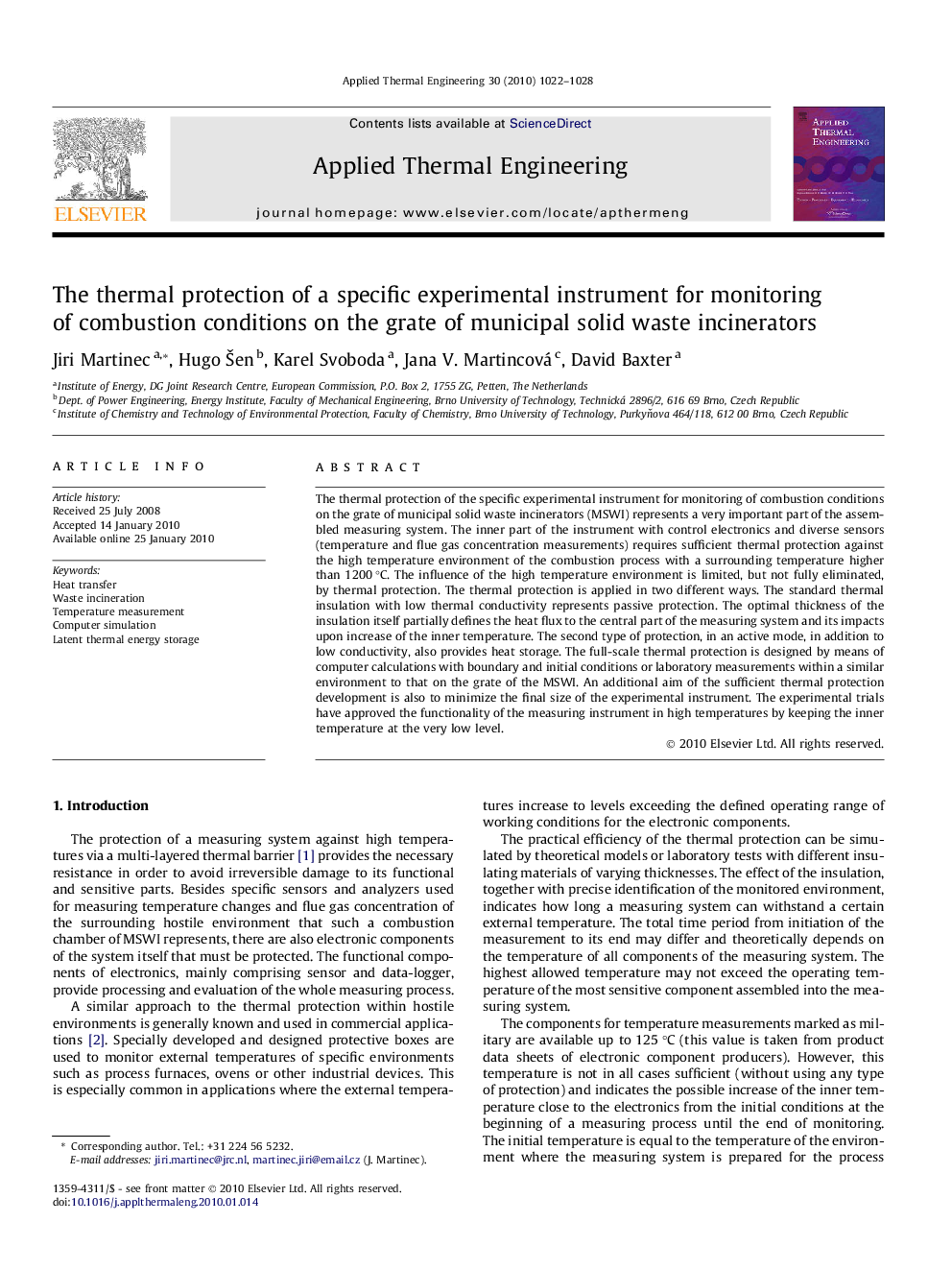| Article ID | Journal | Published Year | Pages | File Type |
|---|---|---|---|---|
| 648461 | Applied Thermal Engineering | 2010 | 7 Pages |
The thermal protection of the specific experimental instrument for monitoring of combustion conditions on the grate of municipal solid waste incinerators (MSWI) represents a very important part of the assembled measuring system. The inner part of the instrument with control electronics and diverse sensors (temperature and flue gas concentration measurements) requires sufficient thermal protection against the high temperature environment of the combustion process with a surrounding temperature higher than 1200 °C. The influence of the high temperature environment is limited, but not fully eliminated, by thermal protection. The thermal protection is applied in two different ways. The standard thermal insulation with low thermal conductivity represents passive protection. The optimal thickness of the insulation itself partially defines the heat flux to the central part of the measuring system and its impacts upon increase of the inner temperature. The second type of protection, in an active mode, in addition to low conductivity, also provides heat storage. The full-scale thermal protection is designed by means of computer calculations with boundary and initial conditions or laboratory measurements within a similar environment to that on the grate of the MSWI. An additional aim of the sufficient thermal protection development is also to minimize the final size of the experimental instrument. The experimental trials have approved the functionality of the measuring instrument in high temperatures by keeping the inner temperature at the very low level.
